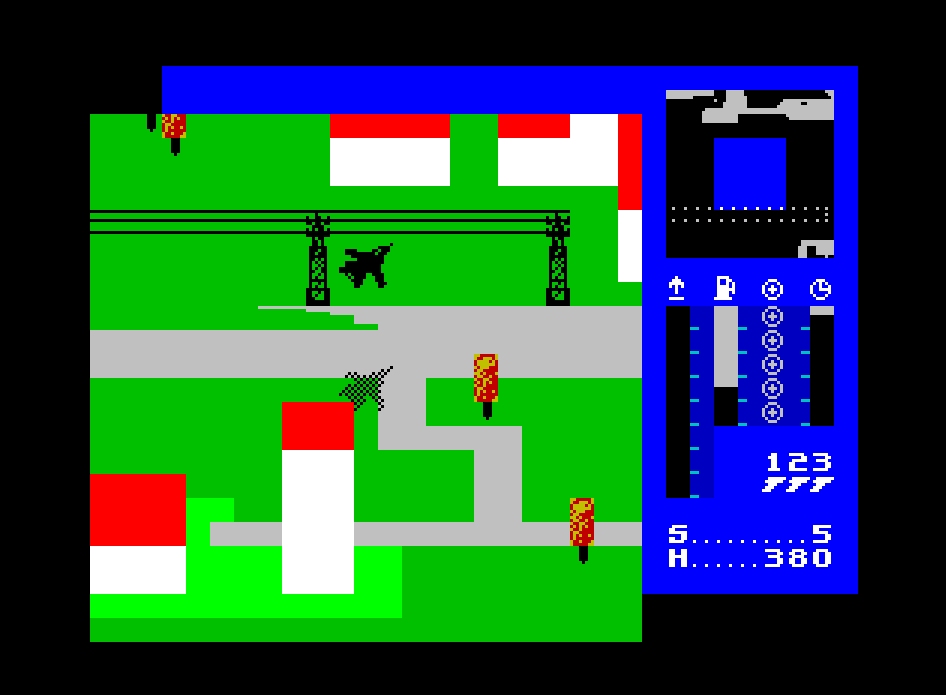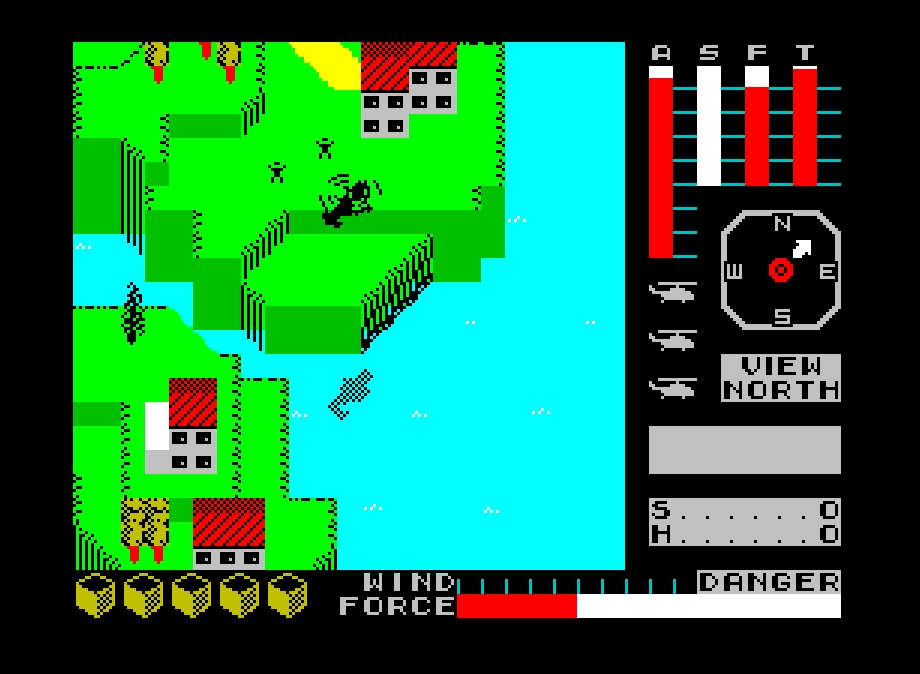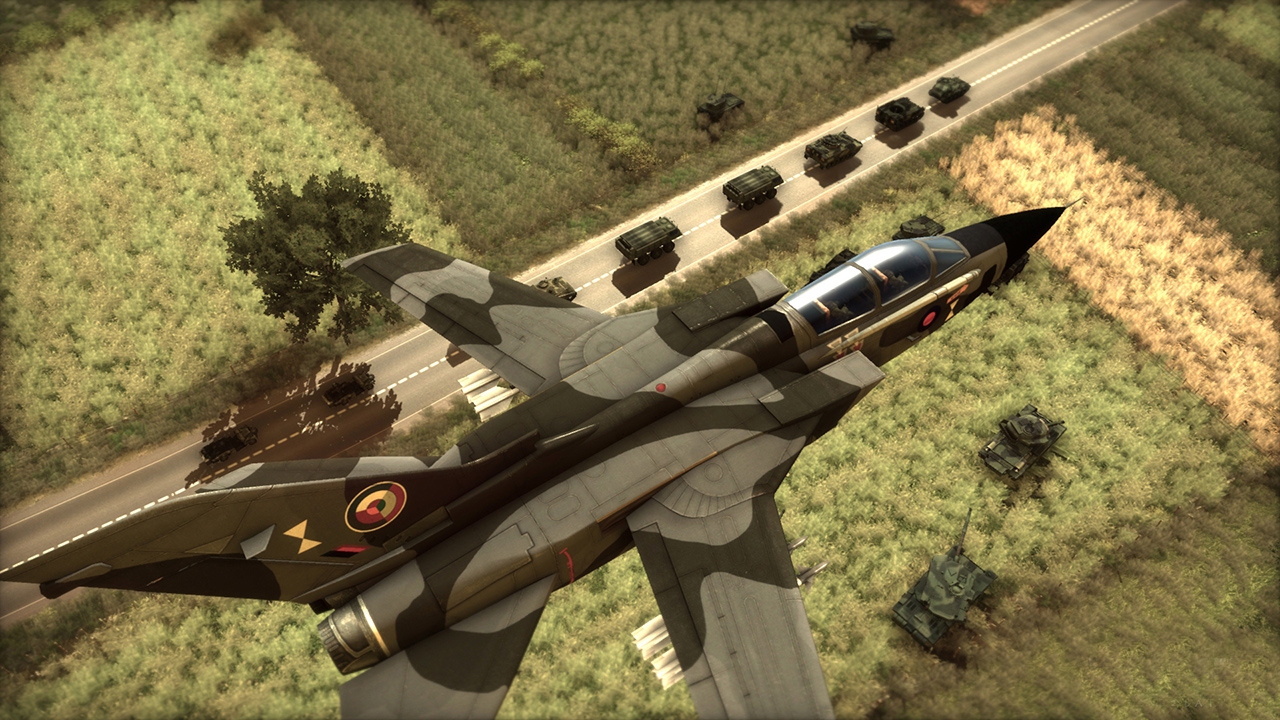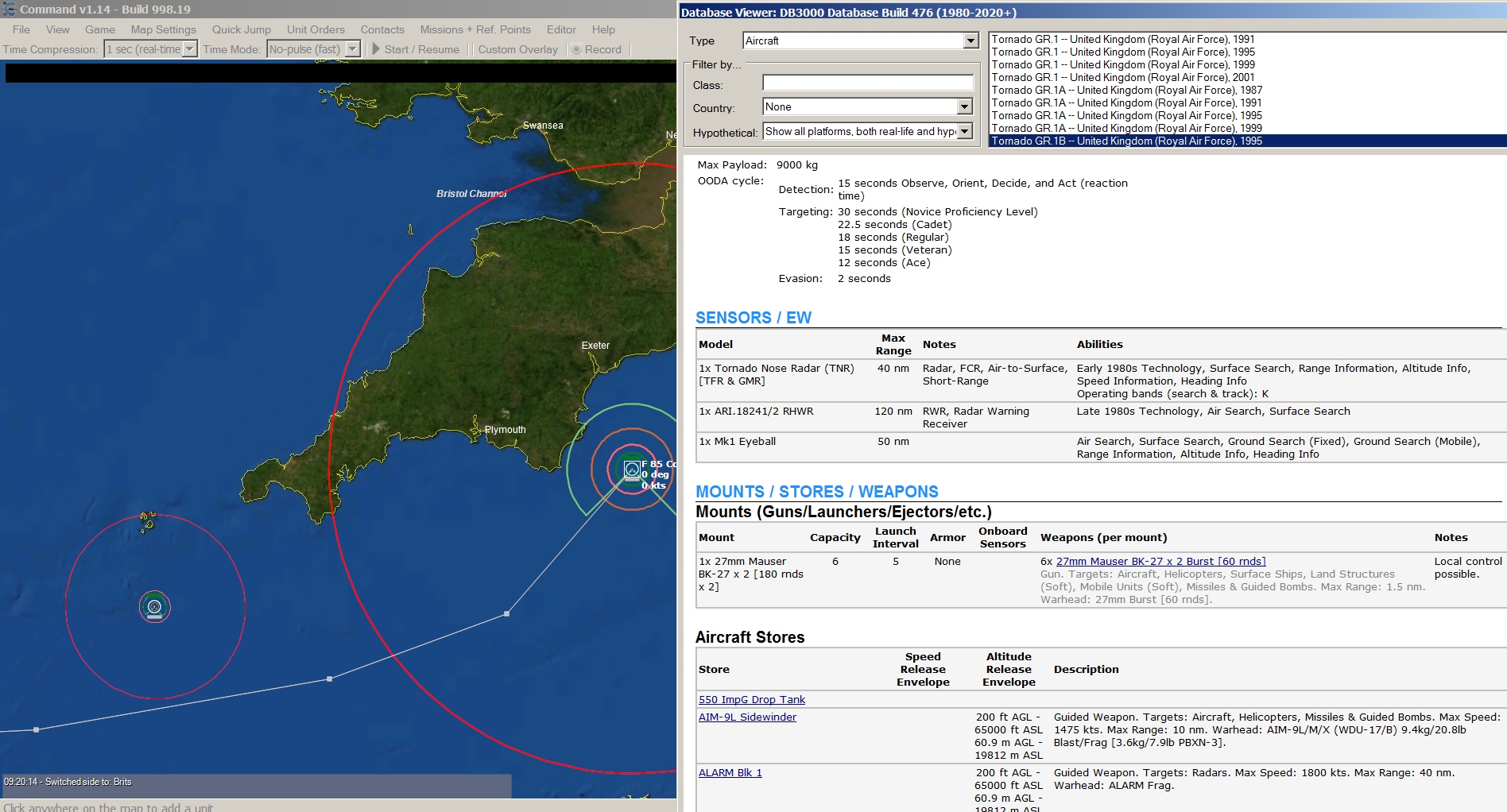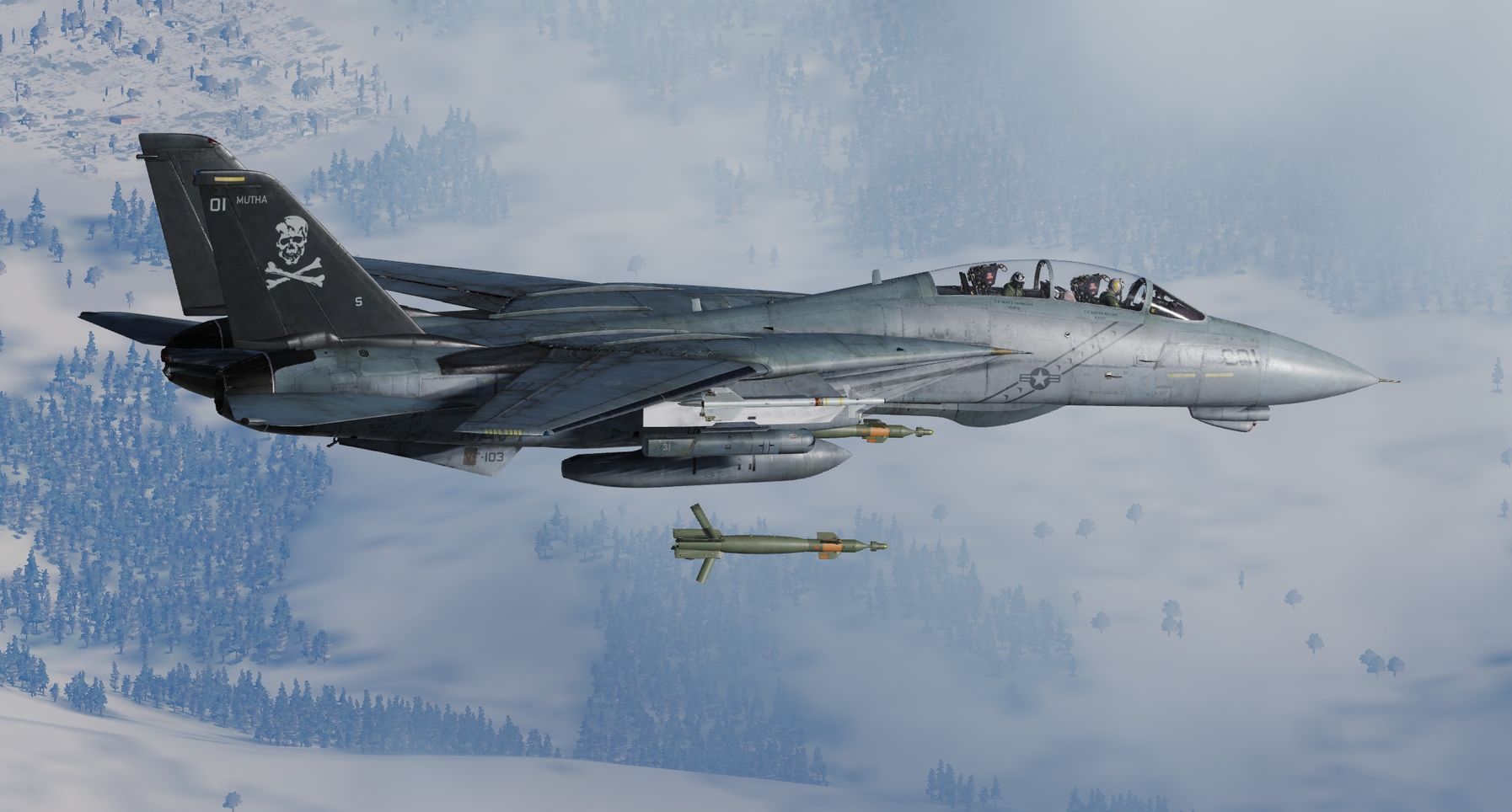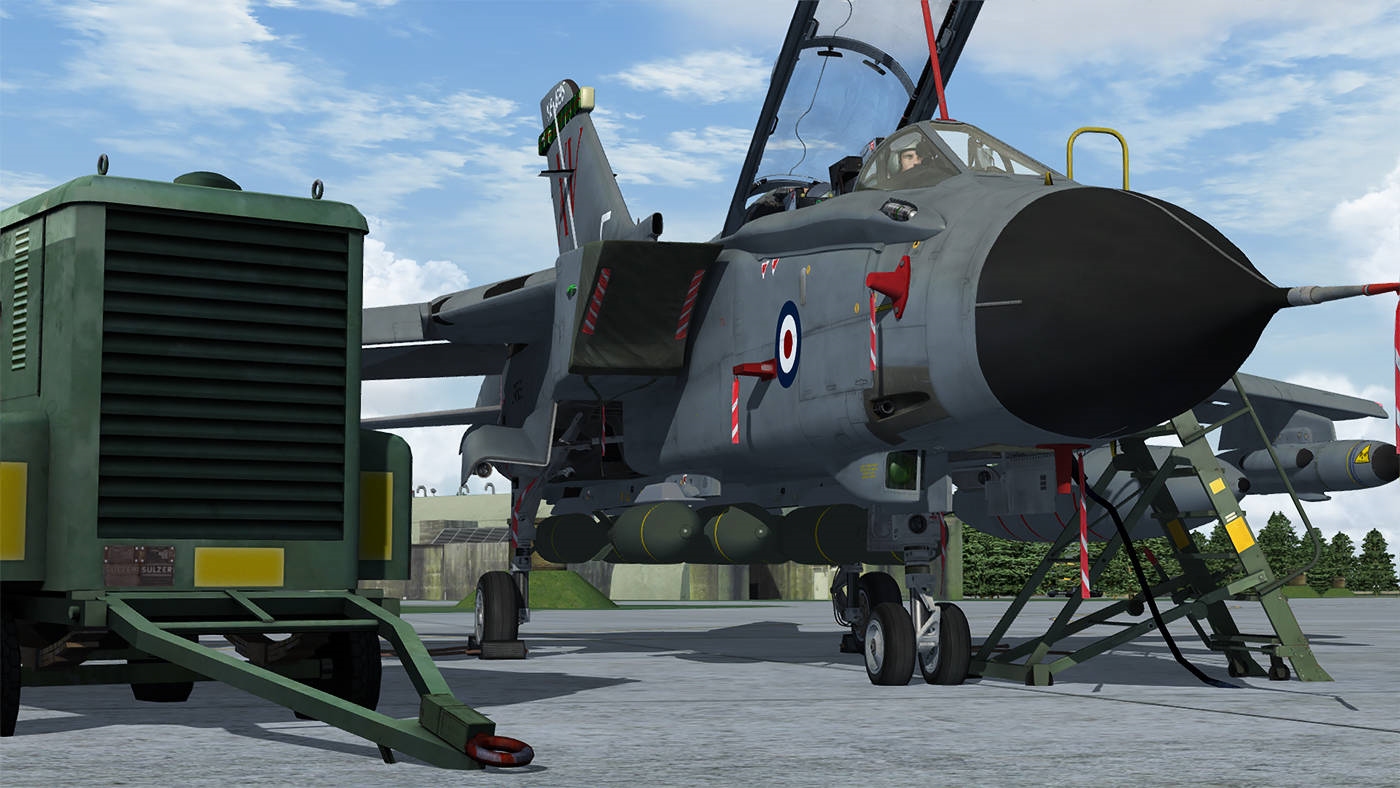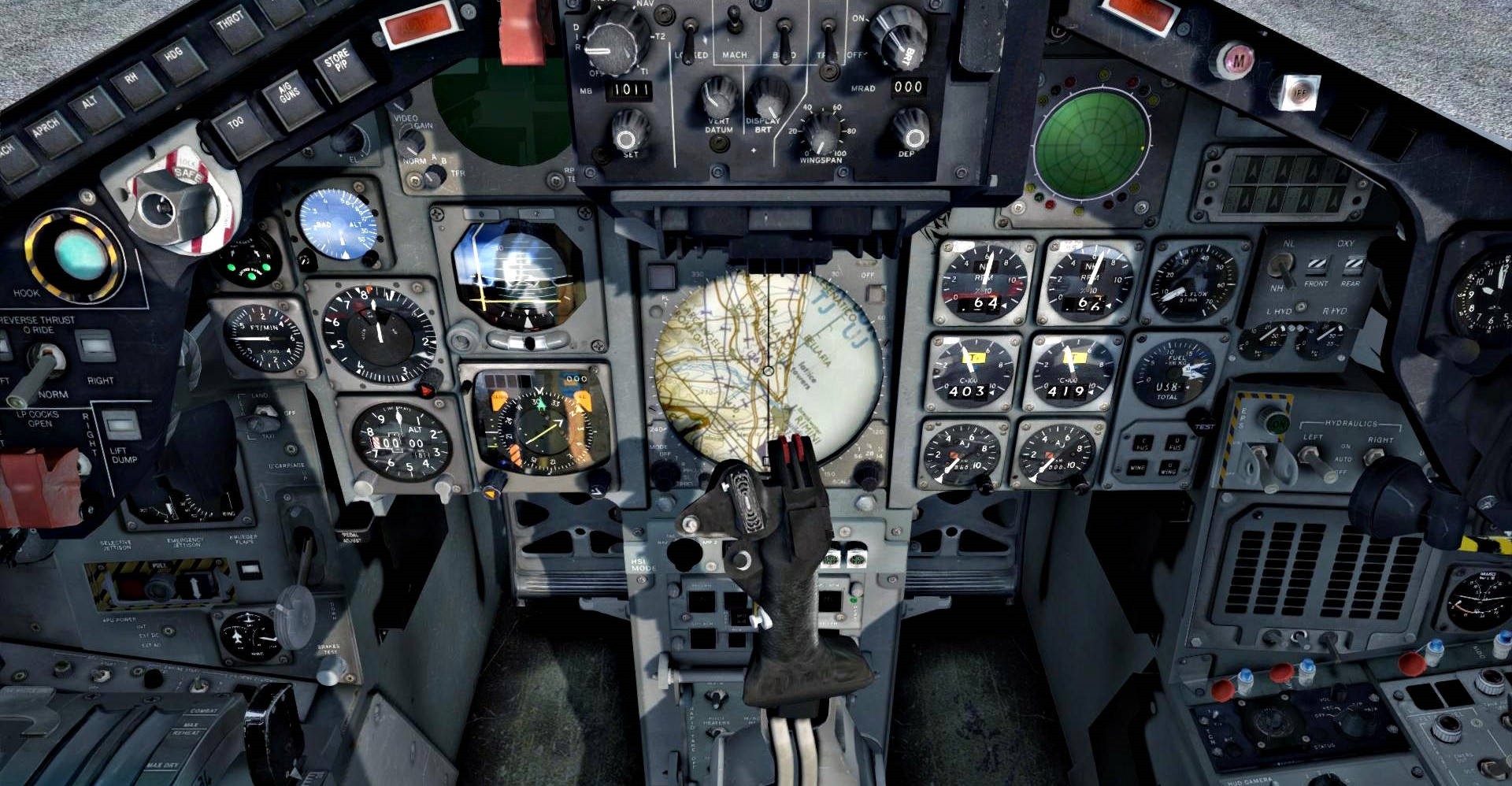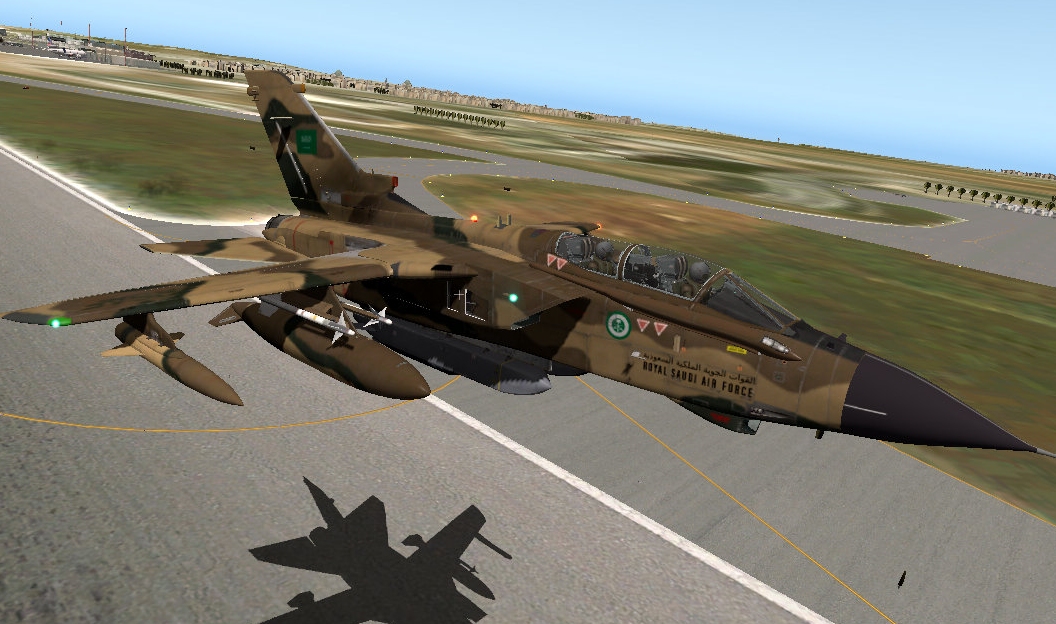The Flare Path: A Tornado Miscellany (original) (raw)
The VTOL songsters that dwell in the vicinity of my local aerodrome must have wondered what was happening on Wednesday. At midday on the 20th a patch of ground on the airfield's eastern perimeter that is usually completely deserted was thronged with hundreds of people. The crowd had gathered to say farewell to the Panavia Tornado, an aircraft that has served the RAF for much longer than fly-by-nights like the Spitfire and Lancaster. Since its introduction in 1979 the Tonka (as it's known to its friends) has participated in several conflicts and dozens of games. In today's FP I laser-designate a choice selection of those games.
Tonka Trivia. The 'pan' in Panavia is a reference to the Tornado's multinational origins. In order to spread development costs, Germany, Britain, and Italy joined forces in the late Sixties with the aim of producing a twin-engine multi-role replacement for past-their-prime types like the Avro Vulcan and Lockheed F-104 Starfighter.
The Tornado's first appearance as a pixelated plaything came in 1984. Tired of mazes and millipoids, but reluctant to completely abandon the impressive 3D engine he'd spent the past nine months coding, Costa Panayi, a British Aerospace employee and amateur game designer, placed Panavia's swing-winger at the centre of a game now considered a classic. Stylish, original, and devilishly difficult TLL (Tornado Low Level) ran on a 48K ZX Spectrum, a computer more powerful than the one then equipping its inspiration, the GR1. As the name implies, NOE (nap-of-the-earth) aviation was the name of the game. Player-pilots zipped about an intricate wraparound archipelago neutralising randomly-placed targets (black dots) by buzzing them at buttercup-buffeting altitudes. SAMs and SPAAGs were nowhere to be seen. Your arch-enemies were tall buildings and telecom masts, pylons and pine trees. Oh, and runways were bally dangerous too. Clumsy cursoring while landing (essential to refill fuel tanks) probably killed as many TLL aircrew as misjudged power-line and bridge stunts.
My memories of TLL are fond, but I hold its slower-paced, more forgiving sequel in higher regard. In Cyclone the swept-wing interdictor was replaced by a rotary-wing angel of mercy. Scouring a rotatable island-dotted map for collectable crates and rescuable islanders, your hovering steed would regularly find itself jostled by a genuinely scary, roaming tropical storm. No modern heli sim features more exciting meteorology.
Tonka Trivia. The Tonka came in two main forms, a low-level, contour-chasing strike version called the IDS (the RAF's GR1s and GR4s) and a Sidewinder/Skyflash-festooned bomber interceptor referred to as the ADV (the RAF's F2s and F3s). Both forms carried a navigator/weapons officer in addition to a pilot.
A few years before Leeds-based spelling renegades Vektor Grafix secured a place in flight sim history by furnishing us with fab Flying Fortresses, they quietly slipped a more modern, more local bomb bus into a less distinguished sim. The Tornado was one of six different flyables in Fighter Bomber (known as Strike Aces in the US), a 1989 offering that used the Strategic Air Command's international bombing competition as a backdrop rather than a real or fictional conflict. Because the IDS's automatic terrain-following capability wasn't simmed, and the scenery provided, though of a respectable size, was decidedly contour-poor, the British warbird had little opportunity to shine. In its favour, Fighter Bomber is the only Tornado sim I'm aware of in which you can ghost through Mount Rushmore while gawping at Abe Lincoln's inexplicably lipsticked kisser.
Tonka Trivia. The Tornado was almost the Panther, a moniker that would have sat quite nicely alongside 'Jaguar' and 'Lynx' but lacked novelty. Not that the name ultimately adopted was completely without baggage. East Anglia echoed to the thunder of Tornados long before the Tonkas arrived, and the Hawker Hurricane's replacement might have been a Tornado if issues with the Rolls-Royce Vulture hadn't got in the way.
A well-executed side-scrolling Tornado game with natty player-customisable terrain following, useful countermeasures, and an exciting escape-and-evasion phase might have stood the test of time and spawned sequels. Sadly, F1 Tornado (1991, Commodore 64, ZX Spectrum) and Tornado Ground Attack (1991, Amiga and Atari ST) were not well-executed side-scrolling Tornado games with natty player-customisable terrain following, useful countermeasures, and exciting escape-and-evasion phases. They only squeak onto this smorgasbord thanks to a grotesquely gargantuan tank (F1 Tornado) and a bizarre briefing deliverer who looks like he'd be much more at home lecturing Albatross pilots on the Western Front circa 1917 (Tornado Ground Attack).
Tonka Trivia. Bird ingestion is a hazard every low-level jet strike aircraft faces. Turbo-Union's engineers acknowledged the danger by dispensing with delicate Inlet Guide Vanes. The Tornado's pair of RB199 engines are designed to swallow, mince, and excrete unfortunate avians without destroying themselves in the process.
The first wargame dev to show any real interest in the Tornado was Big Time Software. In 1994 the seemingly inimitable Flight Commander 2 shipped with four Tonka types in its huge, crowded hangar. The pair of ADVs (Air Defence Variants) were, predictably enough, far from agile but they made up for mediocre manoeuvre ratings (C+ compared to the A- of the F-16) with a prodigious AAM capacity and a good radar. The two IDS (Interdictor/Strike) Tornados weren't exactly nimble either, but able to quit tarmac lugging up to nine anti-radiation missiles or eleven bombs (FC2 didn't sim specific bomb types but bombsight tech is a factor) gosh, could they wreak havoc once if they reached the target.
Tonka Trivia. In common with other swing-wing warbirds like the F-111 Aardvark, the Tornado features wing pylons that automatically pivot when the wings are swept. These vital devices keep stores such as missiles and drop tanks pointed in the direction of travel at all times.
Tornados have been despoiling Wargame's winsome battlefields, and dividing its win-some-lose-some playerbase since 2013. Eugen's willingness to represent relatively obscure variants like the GR1B (ship molester) and the ECR (Wild Weasel specialist) is uncontroversial, but artificial limitations placed on more significant types like the British GR1 in the interests, presumably, of faction balance, furrowed brows and ruffled feathers in some quarters. Learn about the GR1 purely from Red Dragon, and you could be forgiven for thinking RAF Tornados are incapable of employing anti-radiation missiles.
Tonka Trivia. For years the RAF's F2 Tornados flew with 'Blue Circle radar' under their radomes. A stopgap solution while numerous problems with the AI.24 Foxhunter airborne radar were ironed out, this top-secret apparatus consisted of a lump of concrete ballast.
Warfare Sims' globe-girdling, Harpoon-reminiscent real-time wargame Command Modern Air/Naval Operations (part of a Slitherine sale that still has a few hours left to run) is the closest thing we have to a Tornado completist. Every Tornado type that has ever tossed a bomb, slung a missile, spat a cannon round or snapped a crafty recon image in anger is secreted somewhere in the game's colossal unit database. Spared time-consuming 3D model crafting duties (CMANO's units are shown with control room symbology only) the Athenian devs were free to focus on the meaningful stuff - performance, payload, and sensor differences. Prefixes and mark numbers are definitely worth noting in CMANO. Attempt to dogfight a MiG-21 with a Scud-hunting GR1A and you probably won't get very far (The RAF's recon variant lacked cannons and often flew completely unarmed).
Tonka Trivia. In the Tornado prototypes the wing sweep lever was an accident waiting to happen. To sweep the wings backwards you pushed the lever forwards, to unsweep them you pulled it backwards. Test pilot pressure eventually persuaded the boffins to reverse the control.
“Tornado is a remarkably complete simulation of the Panavia Tornado GR.4 Interdictor/Strike (IDS) and F.3 Air Defence Variant (ADV) aircraft... Simulating such a complex aircraft was not easy. It involved a phenomenal amount of research and design... We have done everything we can to provide a detailed and accurate simulation of the aircraft's systems and flying qualities, with the invaluable help of many RAF Tornado aircrew. We have also provided a level of visual realism, density and detail which breaks new ground for a home computer simulation...”
The pride that dripped from Tornado's manual intro was fully justified. Digital Integration's 1993 heavyweight is a sim that burns magnesium-bright in the memories of many combat flight simmers of my generation. Critically acclaimed (Review scores include a 93% awarded in the very first issue of PC Zone) and commercially successful (it pavewayed the way for other great DI sims like Hind) its combination of deep systems and flight modelling, busy battlespaces with long view ranges, and a swing-wing star that was often one clumsy joystick nudge or carelessly placed waypoint away from a terminal encounter with terra-firma or a supersonic telegraph pole, gave it credibility and drama that none of its contemporaries could match.
The project lead was Dave Marshall, an ex A&AEE Boscombe Down and RAE Farnborough boffin, so it was hardly surprising that the texture-free Tornado took itself seriously and aimed high. Typical of the game's ambition was its mission planner, a tool far more sophisticated than the one real Tornado crews were using at the time.
Beefed- and beiged-up by a 20-mission Desert Storm add-on in 1994, and extensively modded more recently, the DOSBox-reliant Tornado is long overdue a Hind-style re-release. Sadly, despite sterling efforts by the sim's most industrious and passionate fan, Frankie Kam, that second coming seems as far away as ever.
Tonka Trivia. Nothing illustrates the challenge of operating a weed worrier as complex as the Tornado under combat conditions better than what happened to ZD791 on the first day of Gulf War I. Piloted by John Peters and with John Nichol in the back seat, the aircraft failed to release its munitions over the airfield target (the reason for this will never be known for sure, but it seems likely Nichol forgot to press a button) and was shot down by a shoulder-launched SA-14 SAM in the subsequent confusion.
Neither of the two swing-wing warbirds currently in development for DCS World are Tornados, so, for the foreseeable future, the closest thing to a modern incarnation of DI's Tornado will remain Falcon 4.0: BMS. Like all the alternative steeds furnished by Benchmark Sims' Falcon 4.0 super-mod, the Tonka borrows its avionics wholesale from the F-16. However, a carefully crafted cockpit, a bespoke FM, and that famously dynamic dynamic campaign engine, mean the compromises are easily overlooked...
Tonka Trivia. The real Tornado comes with an 'Easy Flight Model' that can be turned on and off with the flick of a switch. When engaged the SPILS (Spin Prevention and Incidence Limiting System) computer limits the aircraft's Angle of Attack, preventing potentially risky manoeuvres. Pilots fly with this safeguard deactivated at their peril.
No survey of the Tornado's career in interactive entertainment would be complete without a few words on its Microsoft Flight Simulator and X-Plane appearances. Based a short drive from Tornado stronghold, RAF Marham, it's hardly surprising British MSFS enrichers, Just Flight, have a soft spot for the type. Their 2015 GR1 boasted cockpits to die for and a profusion of fastidiously simmed systems (autopilot, CSAS, SPILS etc.) but low framerates and problems with the terrain-following radar meant it wasn't universally lauded. Unperturbed, they are presently working on the G1's interceptor sibling.
Tonka Trivia. Rewiring a Tornado isn't a job for the faint-hearted. Every airframe contains around 30 miles of electrical spaghetti.
Sim Skunk Works provide a decent alternative to the JF Tornado. Although more expensive and lacking a fully-modelled back seat and a functioning autopilot, the SSW Tonka is TacPack compatible and equipped with a superior moving map.
Tonka Trivia. The most humane weapon carried by the Tornado is incapable of killing or maiming. A low pass by a full-throttle Tonka can be truly terrifying (I speak from experience) and sometimes proves just as effective at deterring foes as traditional armaments.
The man behind Mudspike.com and some of PC Pilot magazine's most interesting articles, Chris Frishmuth, describes the premier X-Plane Tonka as “fantastic” and provides heaps of evidence to back up that statement. X-Trident have adopted a similar approach to the moving map as SSW (you can add your own cartography) and, via plug-ins, they've modelled Tornado capabilities like buddy-pod refuelling and arrestor hook landings I don't recall seeing in Simulatia before. And, of course, as X-Plane has basic weapon functionality out of the box, you can scar the scenery and depopulate the firmament without the need for additional add-ons.
Tonka Trivia. Almost identical when delivered, British and German IDS Tornados are now very different beasts. Unlike the RAF's machines, which underwent a major 'Mid-Life Update' in the late Nineties, Luftwaffe Tornados have remained largely untouched and consequently struggle in certain conditions.
Sorry, Wings Over Europe, ARMA, YSFlight, Ace Combat etc. The Flare Path deadline is approaching like a speeding SA-3. It looks like I'm going to have to leave this ludological biography half-finished. Expect Part II the week the Luftwaffe or Aeronautica Militare retire their Tornados (Italian Tonkas are set to be pensioned off in 2027, German ones may survive into the 2030s) or Interplay and GOG make myriad middle-aged joystick jigglers joyous by doing the decent thing and re-releasing Digital Integration's Tornado.
* * *
